Just imagine this: Saturday morning in the late ’90s, a bowl of sugary cereal balanced on your knees, the glow of the TV flickering across the living room.
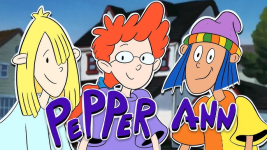
Suddenly, there she was, Pepper Ann Pearson, striding down the hallway in her oversized shirt, ponytail bouncing, and that unforgettable theme song ringing in your ears. Even now, the memory can hit like a time machine.
Ever catch yourself humming the tune or quoting a one-liner out of nowhere?
Maybe you’ve found yourself scrolling through Disney+ and thinking, Wow, I haven’t seen this since I was a kid. That little jolt of recognition isn’t random. It’s proof that Pepper Ann left her mark. She wasn’t just another cartoon character; she was the awkward, red-haired mirror of every kid who felt caught between wanting to fit in and wanting to stand out.
I remember sitting cross-legged on the floor, thinking Pepper Ann’s everyday dramas felt bigger than anything happening in my own world. Crushes, embarrassing moments, arguments with siblings—it was all there, wrapped up in colorful animation and clever humor that still makes sense decades later. And honestly, we’ve all been there.
This article isn’t just about recapping an old show. It’s about rewinding the VHS of memory and pressing play on why Pepper Ann ruled our Saturday mornings, and why she still holds a corner of our hearts today.
Stick around, because you might end up reliving a few middle school shenanigans of your own.

 youtube.com
youtube.com
Pepper Ann joined the mix on September 13, 1997. The series was created by Sue Rose, a name worth remembering because she made history as the first woman to create an animated show for Disney. That wasn’t a small thing at the time. Kids didn’t know it, but behind the colorful animation was a quiet milestone for television.
The series itself started as a comic strip in YM Magazine. Disney executives saw the potential and gave it a shot on the small screen. What began as a side project soon became a cultural time stamp for kids growing up in the late ’90s.
Pepper Ann originally aired on Disney’s One Saturday Morning block on ABC. The format was simple but effective: 22-minute episodes split into two short segments. This kept the pace snappy, perfect for kids with short Saturday attention spans.
Later seasons also ran on UPN under the banner “Disney’s One Too.” In total, the show delivered 65 episodes made up of 113 segments across four seasons. That made it one of Disney’s longer-running animated sitcoms at the time, even though it rarely gets mentioned in the same breath as giants like Recess or Doug.
That’s where Pepper Ann came in.
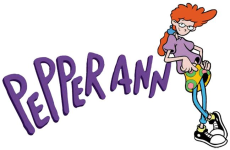
Photo Credit: Pinterest
Unlike shows centered on group antics, Pepper Ann leaned on the everyday chaos of one middle-schooler. Crushes, awkward hallway encounters, overactive imaginations, it was real life, just animated. For many kids, it felt more personal than the slapstick comedies airing alongside it.
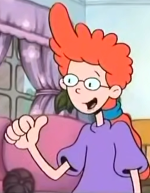
Photo Credit: Disney Wiki
A red-haired seventh grader with glasses and an overactive imagination. She often slipped into daydreams where she was braver, cooler, or just plain weirder than real life. Her charm came from being awkward yet fearless enough to keep trying. Kids saw themselves in her.
She wasn’t perfect. She made mistakes. But she always bounced back.
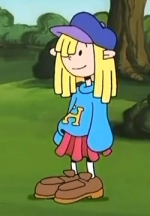
Smart, polite, and usually the calm voice in the group. She loved books and prided herself on staying composed. But sometimes her patience cracked and the rage slipped out. That made her feel more human. She showed kids that being “the smart one” didn’t mean being flawless.
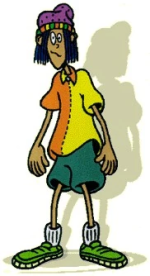
Laid back and a little eccentric. He cared more about his art than fitting in. His oddball energy gave Pepper Ann balance. He wasn’t just a sidekick.
He was proof that creativity had value even if others didn’t always get it.

She juggled her job at a clothing store with raising two daughters. She wasn’t portrayed as perfect or overly strict. She was relatable. Parents watching could see real struggles. Kids saw a mom who cared even when life wasn’t easy.
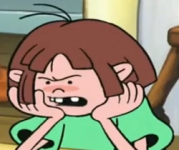
She liked skateboarding and often ignored what others thought. Moose challenged the typical “little sister” role. She was tough, funny, and surprisingly wise for her age. Many fans still consider her one of the show’s best characters.

It focused on a group of kids and their adventures during school breaks. The tone was more about teamwork and playground politics. Pepper Ann was different. It zoomed in on one character’s personal struggles and fantasies.
Both shows captured school life but from very different angles.
Like Pepper Ann, it centered on a smart outsider. Both shows used humor to explore awkward social situations. But Daria was dry and sarcastic. Pepper Ann was lighter, faster, and aimed at younger viewers.
The link between the two is clear: both gave girls a voice that didn’t fit the usual TV mold.
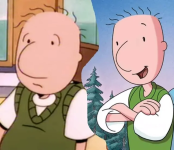
Doug often imagined himself as superheroes or other larger-than-life roles. Pepper Ann did the same but with a wilder edge. Where Doug leaned toward innocence, Pepper Ann leaned toward satire. Both carved a space for quiet kids with loud imaginations.
Hey Arnold! had a similar focus on everyday life but with an urban backdrop. Clarissa Explains It All wasn’t animated but gave kids a quirky, relatable female lead.
Each of these shows reflected the ’90s push to tell stories that felt closer to real childhood. Pepper Ann stood out by mixing humor with subtle commentary, all while keeping it fun for Saturday mornings.

The story would have sent Pepper Ann and her soccer team to Brazil to stop a developer from destroying the Amazon rainforest. The project was canceled before it was finished. Years later concept art showed up on eBay.
Fans were shocked that a full feature had once been planned.
He later created Codename: Kids Next Door for Cartoon Network. That show became one of the biggest hits of the early 2000s. Few fans realize both series share the same creative DNA.
Pepper Ann’s family was partly Jewish on her mother’s side. Nicky followed a pescetarian diet. For a kids’ cartoon in the late ’90s, these details were rare.
They showed kids that difference could be normal.
Instead of magical powers or superhero antics the show focused on middle school drama. The experiment worked. It opened the door for later hits like Lizzie McGuire and Kim Possible.
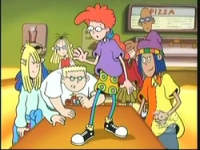
Her daydreams were exaggerated versions of her hopes and fears. One moment she was a rock star. The next she was a superhero. These fantasies weren’t just jokes. They were ways of showing how kids imagine themselves bigger than life while struggling with self-doubt in real life.
The Pearson family looked different from most TV families at the time.
A single mom raising two daughters was not the standard Disney setup. Lydia worked hard to keep her family afloat. Pepper Ann clashed with Moose but also leaned on her. The show treated family life as messy and complicated but full of love.
The trio of Pepper Ann, Nicky, and Milo gave the show its balance.
They argued. They messed up.
Yet they always circled back to each other. Their loyalty reflected real friendships where sticking together mattered more than being perfect.
Pepper Ann was not the typical cartoon girl. She was tomboyish, clumsy, and outspoken. The show poked fun at gender roles in school and society. Episodes tackled crushes, sports, and popularity contests but often flipped the usual script. Kids watching learned that being yourself was stronger than fitting into someone else’s box.
The humor came from exaggeration and timing. Fantasy cutaways made ordinary moments huge and hilarious. A hallway embarrassment could turn into a full-blown Broadway number. The laughs landed because everyone had felt those small disasters in real life.
That mix of comedy and truth is why the show still feels fresh.
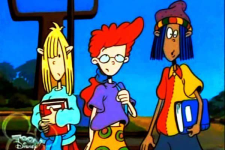
Photo credit: AminoApps
It cleared a path for later shows like Kim Possible. It also showed Disney that slice-of-life comedy could work alongside fantasy-heavy series.
After its ABC run the show lived on through reruns. Disney Channel and Toon Disney kept it alive into the mid 2000s. In 2021 the entire series dropped on Disney+. Fans rushed back. New viewers discovered it for the first time. Clips now surface on TikTok and Instagram where nostalgic fans share moments that still feel relatable.
The series ran for four seasons with 65 episodes. That was longer than some of its Disney peers. While merchandise was limited there were lunchboxes, apparel, and VHS releases. Fan petitions for a reboot or reunion still appear online. The numbers may not rival bigger franchises but the staying power shows lasting influence.
For many kids Pepper Ann became a symbol of individuality. She made it okay to be awkward, loud, and unsure. Viewers who grew up with her often recall how the show helped them embrace quirks instead of hiding them.
Nostalgia has given the series a second life. Millennials revisit it as comfort TV. Gen Z finds it through streaming and memes. The mix of humor and honesty continues to resonate.
That’s why a show that ended in 2001 still sparks conversations today.
You can catch up with these episodes on:
Just you, a bowl of cereal, and the glow of a cartoon that somehow understood what growing up felt like. That thought lingers because Pepper Ann wasn’t just a show. It was a mirror. It made awkward moments feel normal, and small victories feel huge.
We’ve walked back through the episodes, the characters, and the themes that made this red-haired rebel unforgettable. We’ve seen how the show broke quiet ground, gave space to voices that weren’t often heard, and left fingerprints on later Disney classics.
Most of all, we’ve remembered how it made us laugh, cringe, and dream all at once.
So here we stand. We’ve laughed, we’ve remembered, and we’ve reconnected with a part of ourselves that never really left. That spark of imagination, that fearless awkwardness, that joy of being a little different; it still rules our memories today.
Raise that imaginary cereal bowl high. Because Pepper Ann isn’t just a relic of the ’90s. She’s proof that the best stories don’t fade. They grow louder in the echoes of our nostalgia.
And if that theme song’s playing in your head right now, you know she still rules yours too.
What do you remember about Pepper Ann? Please comment below.

Suddenly, there she was, Pepper Ann Pearson, striding down the hallway in her oversized shirt, ponytail bouncing, and that unforgettable theme song ringing in your ears. Even now, the memory can hit like a time machine.
Ever catch yourself humming the tune or quoting a one-liner out of nowhere?
Maybe you’ve found yourself scrolling through Disney+ and thinking, Wow, I haven’t seen this since I was a kid. That little jolt of recognition isn’t random. It’s proof that Pepper Ann left her mark. She wasn’t just another cartoon character; she was the awkward, red-haired mirror of every kid who felt caught between wanting to fit in and wanting to stand out.
I remember sitting cross-legged on the floor, thinking Pepper Ann’s everyday dramas felt bigger than anything happening in my own world. Crushes, embarrassing moments, arguments with siblings—it was all there, wrapped up in colorful animation and clever humor that still makes sense decades later. And honestly, we’ve all been there.
This article isn’t just about recapping an old show. It’s about rewinding the VHS of memory and pressing play on why Pepper Ann ruled our Saturday mornings, and why she still holds a corner of our hearts today.
Stick around, because you might end up reliving a few middle school shenanigans of your own.
Background & Facts: What You Need to Know
In the late ’90s, Disney rolled out a lineup of cartoons that became weekend rituals.
PEPPER ANN DISNEY CHANNEL FULL EPISODES 📺🎊
Share your videos with friends, family, and the world
Pepper Ann joined the mix on September 13, 1997. The series was created by Sue Rose, a name worth remembering because she made history as the first woman to create an animated show for Disney. That wasn’t a small thing at the time. Kids didn’t know it, but behind the colorful animation was a quiet milestone for television.
The series itself started as a comic strip in YM Magazine. Disney executives saw the potential and gave it a shot on the small screen. What began as a side project soon became a cultural time stamp for kids growing up in the late ’90s.
Pepper Ann originally aired on Disney’s One Saturday Morning block on ABC. The format was simple but effective: 22-minute episodes split into two short segments. This kept the pace snappy, perfect for kids with short Saturday attention spans.
Later seasons also ran on UPN under the banner “Disney’s One Too.” In total, the show delivered 65 episodes made up of 113 segments across four seasons. That made it one of Disney’s longer-running animated sitcoms at the time, even though it rarely gets mentioned in the same breath as giants like Recess or Doug.
Cultural Context of the Late ’90s
The late ’90s were a busy time for kids’ TV. Nickelodeon was churning out hits like Hey Arnold! and Cartoon Network was experimenting with offbeat shows like Ed, Edd n Eddy. Disney needed its own identity.That’s where Pepper Ann came in.

Photo Credit: Pinterest
Unlike shows centered on group antics, Pepper Ann leaned on the everyday chaos of one middle-schooler. Crushes, awkward hallway encounters, overactive imaginations, it was real life, just animated. For many kids, it felt more personal than the slapstick comedies airing alongside it.
Landmark Events
Several firsts and milestones set Pepper Ann apart:- First Disney animated series created by a woman. A breakthrough in a male-dominated field.
- Syndication success. After its ABC run, the show moved to Disney Channel and Toon Disney, keeping it alive for early 2000s audiences.
- Streaming revival. In September 2021, Disney+ added all 65 episodes to its library. Suddenly, old fans could revisit the series while new viewers discovered it for the first time.
Main Characters: The Quirky Crew of Hazelnut Middle School
Pepper Ann Pearson
Pepper Ann was the heart of the show.
Photo Credit: Disney Wiki
A red-haired seventh grader with glasses and an overactive imagination. She often slipped into daydreams where she was braver, cooler, or just plain weirder than real life. Her charm came from being awkward yet fearless enough to keep trying. Kids saw themselves in her.
She wasn’t perfect. She made mistakes. But she always bounced back.
Nicky Anais Little
Nicky was the brainy best friend.
Smart, polite, and usually the calm voice in the group. She loved books and prided herself on staying composed. But sometimes her patience cracked and the rage slipped out. That made her feel more human. She showed kids that being “the smart one” didn’t mean being flawless.
Milo Kamalani
Milo was the artist and comic relief.
Laid back and a little eccentric. He cared more about his art than fitting in. His oddball energy gave Pepper Ann balance. He wasn’t just a sidekick.
He was proof that creativity had value even if others didn’t always get it.
Lydia Pearson
Lydia, Pepper Ann’s mom, was a hardworking single parent.
She juggled her job at a clothing store with raising two daughters. She wasn’t portrayed as perfect or overly strict. She was relatable. Parents watching could see real struggles. Kids saw a mom who cared even when life wasn’t easy.
Moose Pearson
Moose, the younger sister, was stoic and blunt.
She liked skateboarding and often ignored what others thought. Moose challenged the typical “little sister” role. She was tough, funny, and surprisingly wise for her age. Many fans still consider her one of the show’s best characters.
Supporting Cast
- Craig Bean: the cool older boy who became Pepper Ann’s crush.
- Trinket St. Blair and Cissy Rooney: popular girls who stirred up rivalry.
- Principal Hickey: strict authority figure with no patience for shenanigans.
- Aunt Janie and Uncle Jo Jo: a quirky activist and her cop husband.
Other Shows that Came Close to Pepper Ann
Recess (1997 – 2001)
Recess aired during the same Disney era.
It focused on a group of kids and their adventures during school breaks. The tone was more about teamwork and playground politics. Pepper Ann was different. It zoomed in on one character’s personal struggles and fantasies.
Both shows captured school life but from very different angles.
Daria (1997 – 2002)
Daria ran on MTV and aimed at older teens.Like Pepper Ann, it centered on a smart outsider. Both shows used humor to explore awkward social situations. But Daria was dry and sarcastic. Pepper Ann was lighter, faster, and aimed at younger viewers.
The link between the two is clear: both gave girls a voice that didn’t fit the usual TV mold.
Doug (1991 – 1994, Disney reboot 1996 – 1999)
Doug shared a big trait with Pepper Ann: daydreaming.
Doug often imagined himself as superheroes or other larger-than-life roles. Pepper Ann did the same but with a wilder edge. Where Doug leaned toward innocence, Pepper Ann leaned toward satire. Both carved a space for quiet kids with loud imaginations.
Hey Arnold! had a similar focus on everyday life but with an urban backdrop. Clarissa Explains It All wasn’t animated but gave kids a quirky, relatable female lead.
Each of these shows reflected the ’90s push to tell stories that felt closer to real childhood. Pepper Ann stood out by mixing humor with subtle commentary, all while keeping it fun for Saturday mornings.
5 Little-Known Facts about Pepper Ann
1. The Scrapped Rio Adventure Movie
In 1999 Disney developed a Pepper Ann movie called Rio Adventure.
The story would have sent Pepper Ann and her soccer team to Brazil to stop a developer from destroying the Amazon rainforest. The project was canceled before it was finished. Years later concept art showed up on eBay.
Fans were shocked that a full feature had once been planned.
2. Tom Warburton’s Connection
Tom Warburton worked as the show’s character designer.He later created Codename: Kids Next Door for Cartoon Network. That show became one of the biggest hits of the early 2000s. Few fans realize both series share the same creative DNA.
3. Representation Ahead of Its Time
Pepper Ann slipped in small but meaningful bits of diversity.Pepper Ann’s family was partly Jewish on her mother’s side. Nicky followed a pescetarian diet. For a kids’ cartoon in the late ’90s, these details were rare.
They showed kids that difference could be normal.
4. Voice Cast Surprises
Moose was voiced by Pamela Adlon who later won awards for King of the Hill and created Better Things. Guest actors included Luke Perry, Cree Summer, and Kathy Najimy. The star power behind the show was bigger than most people remember.5. Disney’s Quiet Experiment
Disney used Pepper Ann as a test case for slice-of-life storytelling.Instead of magical powers or superhero antics the show focused on middle school drama. The experiment worked. It opened the door for later hits like Lizzie McGuire and Kim Possible.
What Made Pepper Ann Tick Back In The '90s
Pepper Ann often wrestled with who she wanted to be.
Her daydreams were exaggerated versions of her hopes and fears. One moment she was a rock star. The next she was a superhero. These fantasies weren’t just jokes. They were ways of showing how kids imagine themselves bigger than life while struggling with self-doubt in real life.
The Pearson family looked different from most TV families at the time.
A single mom raising two daughters was not the standard Disney setup. Lydia worked hard to keep her family afloat. Pepper Ann clashed with Moose but also leaned on her. The show treated family life as messy and complicated but full of love.
The trio of Pepper Ann, Nicky, and Milo gave the show its balance.
They argued. They messed up.
Yet they always circled back to each other. Their loyalty reflected real friendships where sticking together mattered more than being perfect.
Pepper Ann was not the typical cartoon girl. She was tomboyish, clumsy, and outspoken. The show poked fun at gender roles in school and society. Episodes tackled crushes, sports, and popularity contests but often flipped the usual script. Kids watching learned that being yourself was stronger than fitting into someone else’s box.
The humor came from exaggeration and timing. Fantasy cutaways made ordinary moments huge and hilarious. A hallway embarrassment could turn into a full-blown Broadway number. The laughs landed because everyone had felt those small disasters in real life.
That mix of comedy and truth is why the show still feels fresh.
Why Pepper Ann Still Rules Decades Later
Pepper Ann proved that audiences were ready for female-driven stories.
Photo credit: AminoApps
It cleared a path for later shows like Kim Possible. It also showed Disney that slice-of-life comedy could work alongside fantasy-heavy series.
After its ABC run the show lived on through reruns. Disney Channel and Toon Disney kept it alive into the mid 2000s. In 2021 the entire series dropped on Disney+. Fans rushed back. New viewers discovered it for the first time. Clips now surface on TikTok and Instagram where nostalgic fans share moments that still feel relatable.
The series ran for four seasons with 65 episodes. That was longer than some of its Disney peers. While merchandise was limited there were lunchboxes, apparel, and VHS releases. Fan petitions for a reboot or reunion still appear online. The numbers may not rival bigger franchises but the staying power shows lasting influence.
For many kids Pepper Ann became a symbol of individuality. She made it okay to be awkward, loud, and unsure. Viewers who grew up with her often recall how the show helped them embrace quirks instead of hiding them.
Nostalgia has given the series a second life. Millennials revisit it as comfort TV. Gen Z finds it through streaming and memes. The mix of humor and honesty continues to resonate.
That’s why a show that ended in 2001 still sparks conversations today.
Pepper Ann Trivia You Might Have Missed
- Pepper Ann’s middle name is “Pearson.” It is rarely spoken on the show.
- Don Adams, famous for Get Smart, voiced Principal Hickey. This was his last role before his death.
- The show was one of the first Disney cartoons to acknowledge Jewish holidays on screen.
- Some episodes were shown out of order on TV. Fans only saw them in the right order once Disney+ released the full run.
Top 10 Most Relatable Pepper Ann Episodes
- “Ziterella” – Pepper Ann battles a giant pimple before a school dance.
- “An Otter Biography” – She fears her life isn’t exciting enough.
- “In Support Of” – A lesson in growing up with embarrassing undergarments.
- “Flaw and Order” – Pepper Ann runs for student council and faces dirty politics.
- “Green-Eyed Monster” – Jealousy over Nicky’s new friend tests loyalty.
- “Romeo and Juliet” – School play chaos mixed with crush drama.
- “Cocoon Gables” – Pepper Ann dreams of escaping Hazelnut for a fancier life.
- “The Big Pencil” – A silly award makes her question her worth.
- “Vanessa Less Tessa” – Friendship gets complicated with gossiping twins.
- “A Kosher Christmas” – Holiday traditions collide in a heartfelt way.
- Disney+: All 65 episodes are streaming in the United States.
- DVD/VHS: Limited runs still pop up on auction sites.
- Online Clips: TikTok and YouTube are filled with fan edits and episode highlights.
Pepper Ann vs Daria vs Recess
| Show | Years Aired | Main Focus | Tone | Audience Legacy |
|---|---|---|---|---|
| Pepper Ann | 1997–2001 | One girl’s school life | Humorous, satirical | Cult following, Disney+ revival |
| Daria | 1997–2002 | Cynical teen worldview | Dry, sarcastic | Strong cult classic, still iconic |
| Recess | 1997–2001 | Group playground antics | Fun, ensemble-driven | Beloved for teamwork themes |
One Last Trip Down Memory Lane
Ever find yourself wishing you could relive those Saturday mornings when the world felt simpler?Just you, a bowl of cereal, and the glow of a cartoon that somehow understood what growing up felt like. That thought lingers because Pepper Ann wasn’t just a show. It was a mirror. It made awkward moments feel normal, and small victories feel huge.
We’ve walked back through the episodes, the characters, and the themes that made this red-haired rebel unforgettable. We’ve seen how the show broke quiet ground, gave space to voices that weren’t often heard, and left fingerprints on later Disney classics.
Most of all, we’ve remembered how it made us laugh, cringe, and dream all at once.
So here we stand. We’ve laughed, we’ve remembered, and we’ve reconnected with a part of ourselves that never really left. That spark of imagination, that fearless awkwardness, that joy of being a little different; it still rules our memories today.
Raise that imaginary cereal bowl high. Because Pepper Ann isn’t just a relic of the ’90s. She’s proof that the best stories don’t fade. They grow louder in the echoes of our nostalgia.
And if that theme song’s playing in your head right now, you know she still rules yours too.
What do you remember about Pepper Ann? Please comment below.

